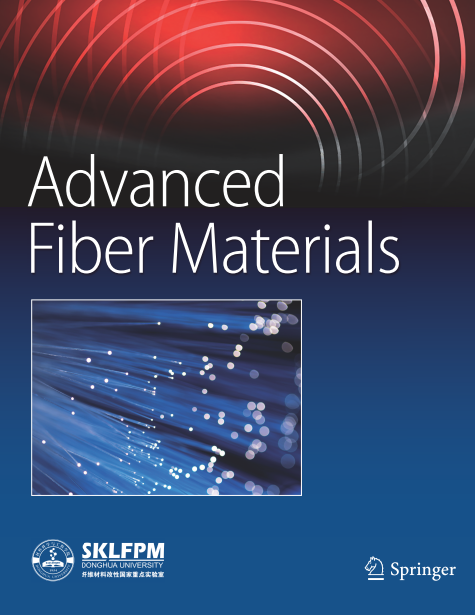Introducing Rich Heterojunction Surfaces to Enhance the High-Frequency Electromagnetic Attenuation Response of Flexible Fiber-Based Wearable Absorbers
Abstract
With the rapid development of 5G communication and artificial intelligence (AI) technology, electromagnetic radiation pollution is emerging as a serious issue. Achieving both uniform dispersion and controllable loading of absorbers and obtaining functional wearable absorbers with high electromagnetic response are still considered great challenges. In this work, a flexible fiber-based absorber (VFT2h/MF/PPy) with a rich interfacial polarization relaxation was obtained by integrating heterostructures and performing nanostructure design and introducing π-conjugated polymer components. Electrons migrated and redistributed between nanoparticles and nitrogen-carbon lattices with different electrostatic states. The formed heterogeneous interface promoted the electromagnetic attenuation response in the high-frequency region. More specifically, the effective absorption frequency bandwidth was up to 5.6 GHz (corresponds to the Ku-band with a matching thickness range up to 2.55–4.85 mm). Impressively, the abundant modification sites on the fiber surface adjusted the content and dispersion of the magnetic nanoparticles and enhanced the vector superposition effect generated by the structural distribution of the magnetic/electric fields. The introduction of dielectric components improved the interfacial polarization strength of the heterojunction surface and the synergistic effect of the dipolar polarization. The high-efficiency electromagnetic attenuation performance was attributed to multiple loss mechanisms. Our work provides a reference path for the microscopic regulation of the high-efficiency electromagnetic response mechanism of fiber-based flexible absorbing materials.
Graphical Abstract


 求助内容:
求助内容: 应助结果提醒方式:
应助结果提醒方式:


